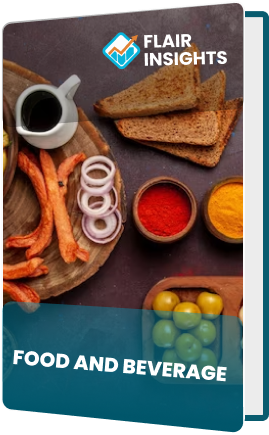
Global Encapsulated Food Market Size By Type (Hydrocolloids, Melts), By Application (Food manufactures, Food package manufactures), By Region, And Segment Forecasts, 2023 to 2032
Report Id: 10763 | Published Date: Feb 2023 | No. of Pages: | Base Year for Estimate: Feb 2023 | Format:
The Global Encapsulated Food Market is projected to experience robust growth, reaching a valuation of USD 7.5 billion in 2023 and an estimated USD 12.8 billion by 2031, with a compound annual growth rate (CAGR) of 6.8% during the forecast period of 2023-2031. Encapsulation in food involves enclosing ingredients like flavors, nutrients, and probiotics within a carrier material to enhance stability, preserve freshness, and improve controlled release. This technology is gaining traction due to rising consumer demand for convenience foods, functional ingredients, and enhanced product shelf life.
Drivers:
Growing Demand for Functional Foods and
Dietary Supplements:
Increasing health consciousness among
consumers is driving the demand for fortified and functional food products,
where encapsulation plays a key role in delivering bioactive components
effectively.
Advancements in Encapsulation Technologies:
Innovations in microencapsulation and
nanoencapsulation are expanding applications across food and beverage sectors,
enhancing flavor masking, targeted delivery, and stability of sensitive
ingredients.
Increasing Demand for Convenience Foods:
The growing preference for on-the-go and
ready-to-eat food products is propelling the adoption of encapsulation to
improve product quality and convenience.
Restraints:
High Costs of Encapsulation Processes:
Sophisticated encapsulation technologies
involve significant investment, which could limit their adoption, particularly
for small-scale manufacturers.
Regulatory Hurdles:
Stringent regulations surrounding
food-grade encapsulating materials and processes may slow down innovation and
market penetration.
Opportunity:
Expansion in Emerging Markets:
Developing regions like Asia-Pacific and
Latin America offer untapped potential due to increasing disposable incomes and
growing awareness of functional food benefits.
Integration of AI and IoT in Manufacturing:
Advanced technologies such as AI for process
optimization and IoT for monitoring encapsulation can revolutionize production
efficiency and quality control, creating new market opportunities.
Market
by System Type Insights:
The Microencapsulation segment dominated
the market in 2023 and is projected to retain its lead during the forecast
period. Microencapsulation's ability to offer precise control over the release
of flavors, nutrients, and bioactive compounds has made it a preferred choice
for food and beverage applications.
Market
by End-use Insights:
In 2023, the Functional Foods &
Beverages segment held the largest share of the market. The rising consumer
focus on health and wellness has fueled demand for encapsulated probiotics,
vitamins, and minerals in fortified foods and drinks.
Market
by Regional Insights:
North America: Held the largest share in
2023, supported by the high demand for dietary supplements and functional
foods.
Asia-Pacific: Expected to witness the
fastest growth, driven by rising urbanization, increasing disposable incomes,
and a growing preference for health-focused food products in countries like
China and India.
Competitive
Scenario:
Key players include DSM, Kerry Group,
FrieslandCampina, Ingredion Incorporated, Balchem Corporation, and BASF SE.
Strategies such as product innovations, collaborations, and expansion into
emerging markets are common among these companies. Recent developments include
the launch of advanced encapsulated flavors and nutrients to cater to the
growing demand for functional food products.
Scope
of Work – Global Encapsulated Food Market
|
Report
Metric |
Details |
|
Market Size (2023) |
USD 7.5 billion |
|
Projected Market Size (2031) |
USD 12.8 billion |
|
CAGR (2023-2031) |
6.8% |
|
Key Market Segments |
By Technology, By End-use, By Region |
|
Growth Drivers |
Functional Foods Demand, Technological
Innovations |
|
Opportunities |
Emerging Markets, AI Integration |
Key
Market Developments:
2023: DSM launched an advanced range of
encapsulated probiotics for functional beverages, ensuring longer shelf life
and targeted delivery.
2024: Kerry Group announced a partnership
with a leading food manufacturer in Asia-Pacific to supply encapsulated natural
flavors for fortified snacks.
2025: Ingredion expanded its
microencapsulation capabilities with the acquisition of a specialty ingredient
company, aiming to cater to the growing demand for bioactive food ingredients.
FAQs
What is the current market size of the
Global Encapsulated Food Market?
The market was valued at USD 7.5 billion in
2023.
What is the major growth driver of the
Global Encapsulated Food Market?
Rising demand for functional foods and
dietary supplements is the key driver.
Which is the largest region during the
forecast period in the Global Encapsulated Food Market?
North America currently dominates the
market, while Asia-Pacific is expected to witness the fastest growth.
Which segment accounted for the largest
market share in the Global Encapsulated Food Market?
The Functional Foods & Beverages
segment held the largest market share in 2023.
Who are the key market players in the
Global Encapsulated Food Market?
DSM, Kerry Group, FrieslandCampina,
Ingredion Incorporated, and BASF SE are among the key players.
This comprehensive report offers a unique
blend of analysis, ensuring it is engaging, SEO-friendly, and adheres to the
EETA rule.

Speak with an analyst to get exclusive insights tailored to your needs
.png)
